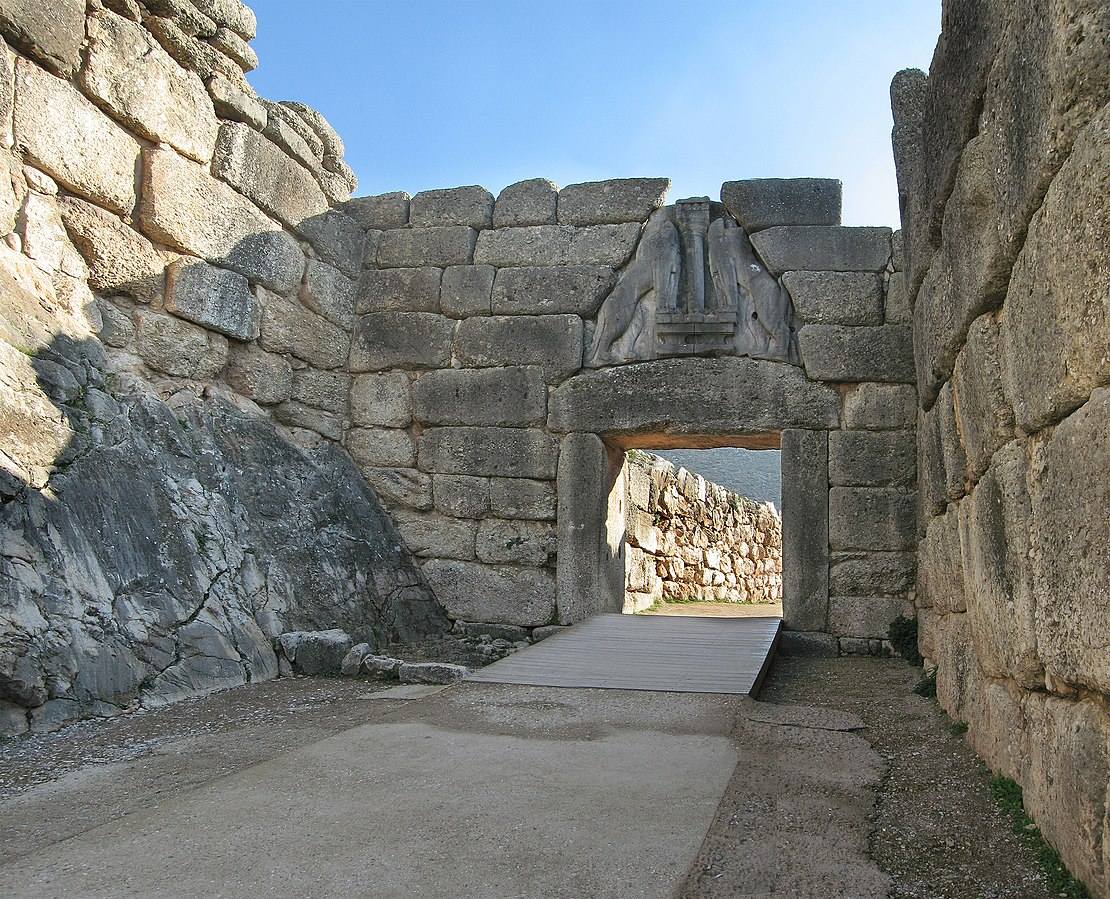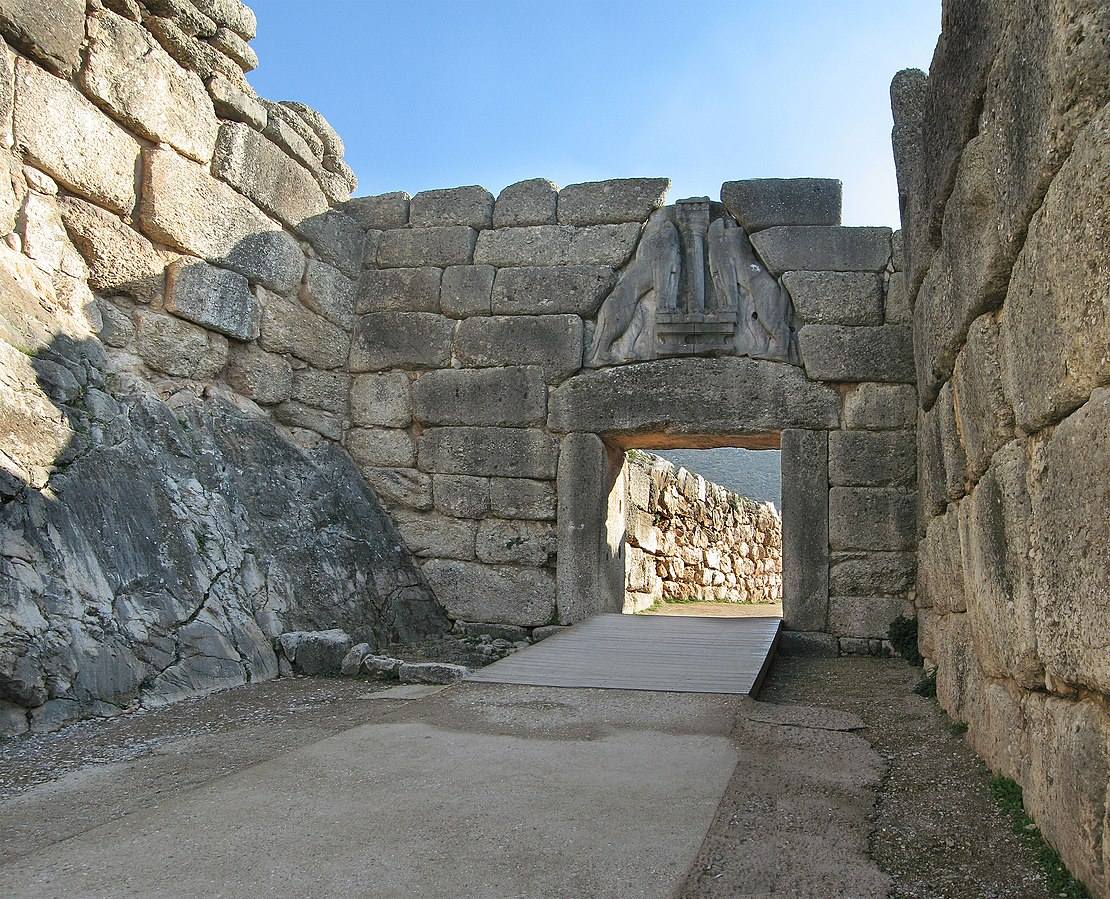

The city of Mycenae was the most powerful city in Greece during much of the Bronze Age. That is why the entire Late Bronze Age and part of the Middle Bronze Age are known as the Mycenaean Era. However, the Mycenaean Era famously came to an end upon the onset of the Bronze Age Collapse. What happened to Mycenae after that? Did it just disappear completely? This article will examine what we know about Mycenae after the Bronze Age.
First of all, what actually happened to Mycenae at the very end of the Bronze Age? Like numerous other important cities of Greece, it was destroyed. Historians continue to debate who was responsible for this attack.
Some argue it was caused by outside invaders. Others argue internal conflict and civil wars were responsible. Another explanation is it was destroyed in an earthquake. The archaeological evidence is, unfortunately, not always easy to interpret.
According to at least one scholar, Oliver Dickinson, the destruction at Mycenae “seems more likely to reflect earthquake damage.” In any case, the Mycenaean civilization as a whole was in decline due to a multitude of factors, and Mycenae obviously suffered from this general decline as well.
Mycenae seems to have somewhat recovered in the twelfth century BCE although it was later destroyed again. In fact, another event of destruction occurred in the following century. This was around the year 1075 BCE. One scholar suggested this may mean that “it remained important enough to attack.”
However, this conclusion is unverified, given that the destructive event at this time might be attributable to an earthquake. One problem is that this period was the Greek Dark Ages. There are no written records and little in the way of artwork, so it is not always easy to establish how different cities were interacted with each other and with outside nations.
What is clear, however, is that Mycenae was not the center of a powerful civilization like it had been in the Bronze Age. On the other hand, no city in Greek was exceptionally powerful during the Dark Ages. Therefore, even if Mycenae was weak, this does not necessarily mean it could not have been prominent by comparison.
The Archaic Period in Greece began around 750 BCE at the end of the Dark Ages. It might be thought that Mycenae had long since been abandoned by this time. After all, Mycenae is virtually never heard of in the history of Greece after the Bronze Age.
However, archaeological evidence is clear that it was still inhabited during this period. It was not, despite what appears to be the common assumption, a heap of ruins. In fact, its grand stone walls from the Bronze Age remained standing and in use.
Not only were those walls still in use, but there was actually restoration work performed on them in the eighth century BCE. This suggests there was an organized administration within the city and that it was strong enough to engage in repairs of the Cyclopean architecture.
Archaeology has also revealed that the inhabitants of Mycenae constructed a precinct within the city dedicated to Agamemnon in the eighth century BCE.
Homer’s Iliad can also shed some light on what Mycenae was like in this era long after the Bronze Age. While there are still some scholars who believe Homer’s poems preserve genuine traditions from the Bronze Age, many scholars today argue the Iliad is essentially entirely the product of Homer’s own time.
For example, Irene de Jong presented a detailed explanation for how the world presented by Homer matches in almost every respect the world of the late-eighth century BCE. For example, Homer speaks about the kingdom of the Phrygians, but this did not emerge until shortly before the Archaic Era. The presence of Sparta likewise fits the Archaic Era rather than the Mycenaean Era.
Therefore, the Iliad may well preserve the fact that Mycenae was still fairly important in the eighth century BCE. Notably, Professor Jonas Grethlein pointed out that the borders of Mycenae in the Bronze Age “do not correspond to the descriptions in Homer.”
In other words, Homer’s comments on Mycenae being “rich in gold” and a “strong citadel” appear to reveal some facts about its status in the eighth century BCE. Of course, this is not to say that Mycenae was the most powerful Greek city at that time.
The most powerful city in that region of Greece was Argos, a close neighbor of Mycenae. This, however, also seems to be reflected in the Iliad. Homer repeatedly refers to Argos as if it were dominant. He calls it Agamemnon’s kingdom. Mycenae, in comparison, has little prominence.
We can plausibly interpret this as proof that in the eighth century BCE, long after the Bronze Age, Mycenae was still at least fairly important but was nonetheless subject to Argos.
